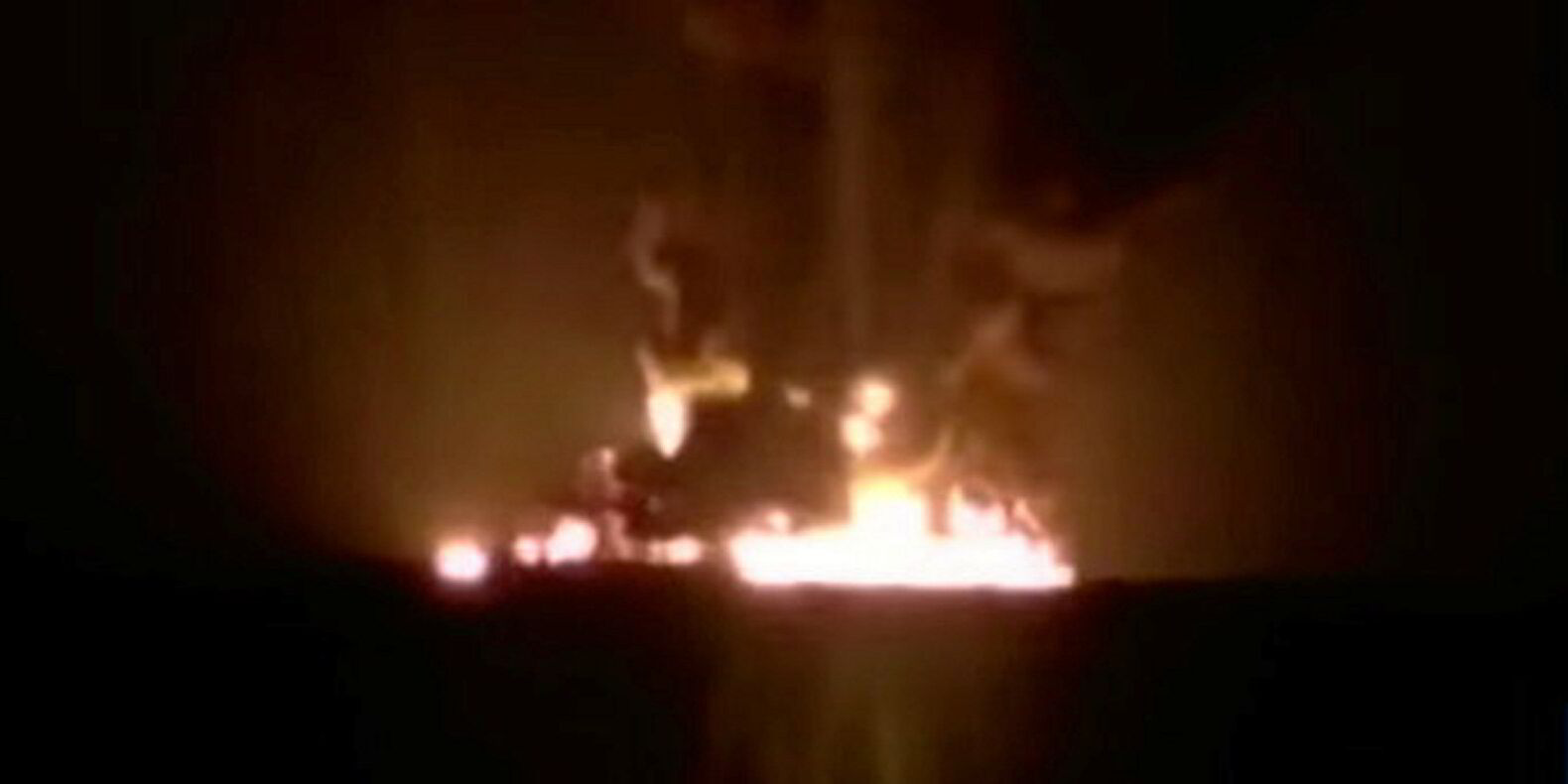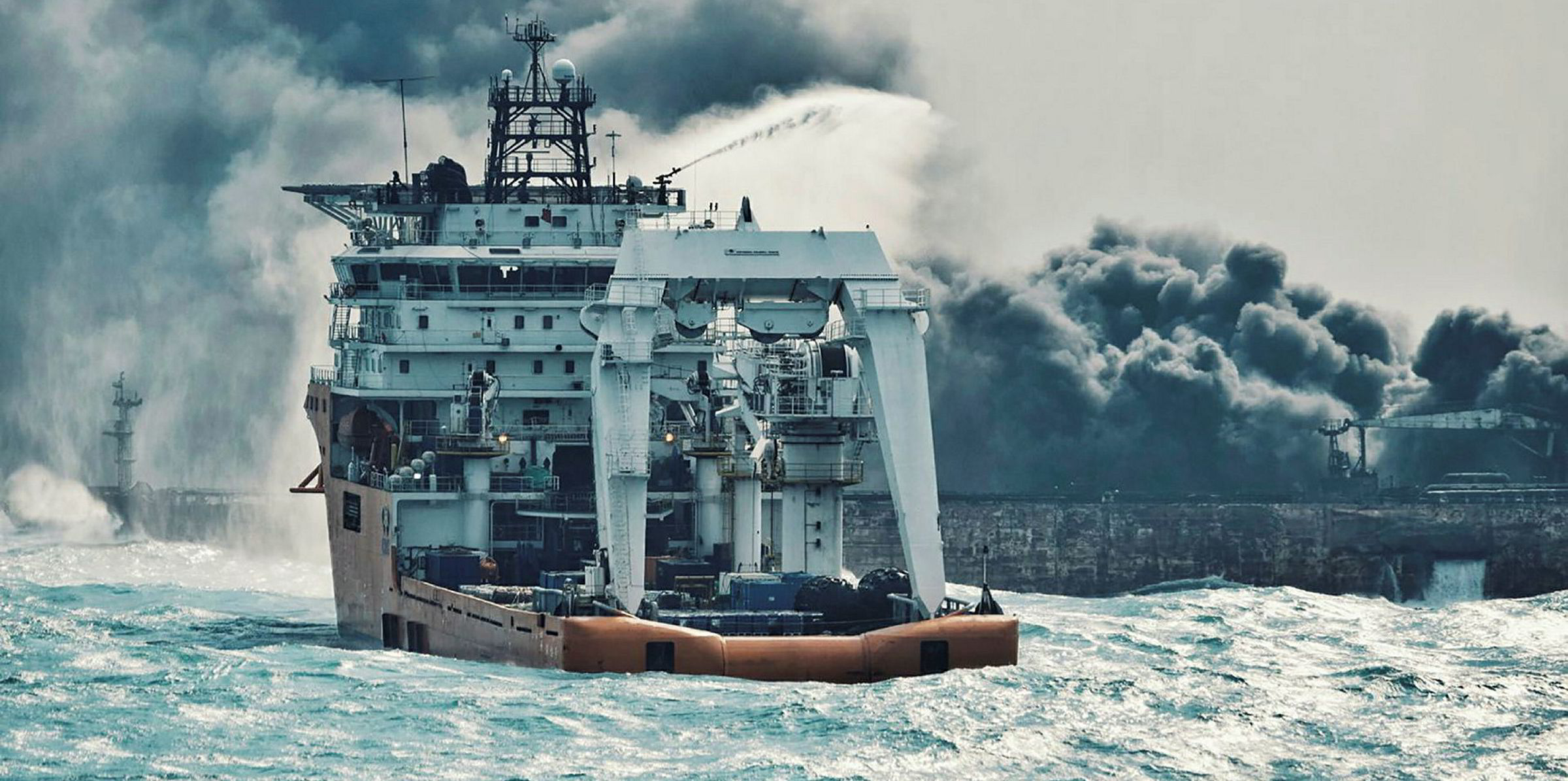For a week in early 2018, more than a dozen vessels scoured the East China Sea in the hope of finding 32 seafarers working aboard an Iranian-owned tanker when it collided with a bulker.
On day eight, after battling with four-metre high waves, leaking condensate, fires and explosions, the 164,000-dwt Sanchi (built 2008) sank and — according to Iranian officials — and all crew members perished.
But Iranian government documents, obtained by TradeWinds as a court case brought by the families weaves its way through US courts, cast doubt on the official story.
Two letters from Iran’s intelligence ministry to the Iranian Revolutionary Guard Corps (IRGC) Intelligence Organization and the Supreme Security Council say 21 of the 32 survived and were taken to an island in the Middle East Gulf for detention.
“[We have decided the seafarers] be held under maximum security conditions in one of the secure and less-frequented Iranian islands in the Persian Gulf” under control of the IRGC one of the letters, sent 21 days after the collision, said.
The documents — which TradeWinds has been unable to independently verify — claimed 21 survivors had been turned over to the IRGC, with 13 survivors initially detained by China being sent via Oman.
The remaining eight were back in Iran by March.
“It is noteworthy that after the personnel are handed over [to the IRGC Intelligence Organization], all matters related to the security of the case, including correspondence, location of individuals, etc, will be the responsibility of that organisation,” a letter said.
“No other ministry, organisation or institution will have the right to pursue the matter,” it added.
The letters do not detail the reasoning for the crew members’ detention or their current status.
But they are another piece of evidence families of the victims can cite in questioning the official story told to them in the wake of the collision.
What is not in dispute is that the Sanchi and the 76,000-dwt bulker CF Crystal (built 2011) collided roughly 160 nautical miles (296 km) off Shanghai on 6 January 2018, as the Sanchi sailed north and the CF Crystal south-west.
All 21 crew members from the Hong Kong-flagged CF Crystal were rescued.
Questions swirled around the Sanchi, however, even after Iran maritime agency head Mahmoud Rastad told state television “there is no hope of finding survivors” after the ship sank.
Only three bodies were recovered from the ship by Chinese rescue crews and the incident report compiled by China in the wake of the incident said the 29 other ostensibly dead crew members were simply missing.
In lawsuits in Tehran and Washington DC, the victims’ families argue they have received more than 1,000 phone calls from international numbers, purportedly their seafaring families trying to get in touch.
Other concerns include the CF Crystal’s black box being overwritten and what they were told was the ultimate cause of death: the inhalation of poison gas from the condensate cargo, which killed the seafarers quickly.
In the US lawsuit, the families allege that the National Iranian Tanker Co, the owner of the Sanchi, offered to hire one member of each family if they agreed their relatives were dead.
The families continue to pursue the US lawsuit with attorneys ordered to move for default judgment by 1 November.
That follows their action in Iran which resulted in the annulment of nine of the seafarers’ death certificates in 2021, as reported by the BBC Persian news service and other domestic media.
“There is no definitive evidence of their deaths following the incident and the reports only suggest possible fatalities,” judge Reza Ahmadi-Firouzjaei said, according to the BBC story.
He argued that the issued death certificates did not “conform to the relevant laws and regulations” and that the lack of evidence meant they were considered “missing”.
The foreign ministries of Iran and Oman did not respond to requests for comment on this story.
6 January: The 164,000-dwt tanker Sanchi (built 2008) and the 76,000-dwt bulker CF Crystal (built 2011) collide in the East China Sea, nearly 140 nautical miles (296 km) off Shanghai
8 January: One body was recovered from the Sanchi
10 January: Part of the Sanchi explodes as 14 vessels search for crew members
12 January: The tanker "keeps exploding", according to Chinese media, hampering firefighting and rescue operations
13 January: Two more bodies are recovered from the Sanchi
14 January: The Sanchi sinks with "no hope of finding survivors" according to an Iranian official
25 January: Iranian government intelligence agencies meet and decide to send 21 surviving crew members to Iranian Revolutionary Guard Corps-controlled (IRGC) island
27 January: Internal letter sent noting 13 of the 21 survivors had returned to Iran via China and Oman
29 January: The three bodies recovered from the Sanchi were identified
3 March: Eight more seafarers are returned to Iran
6 March: Second internal letter sent noting eight more of the Sanchi crew members have returned to Iran
10 May: Accident report published describing 29 of the 32 crew members as missing and only confirming three dead




